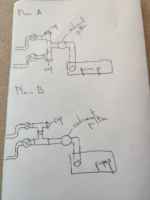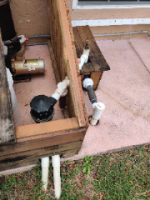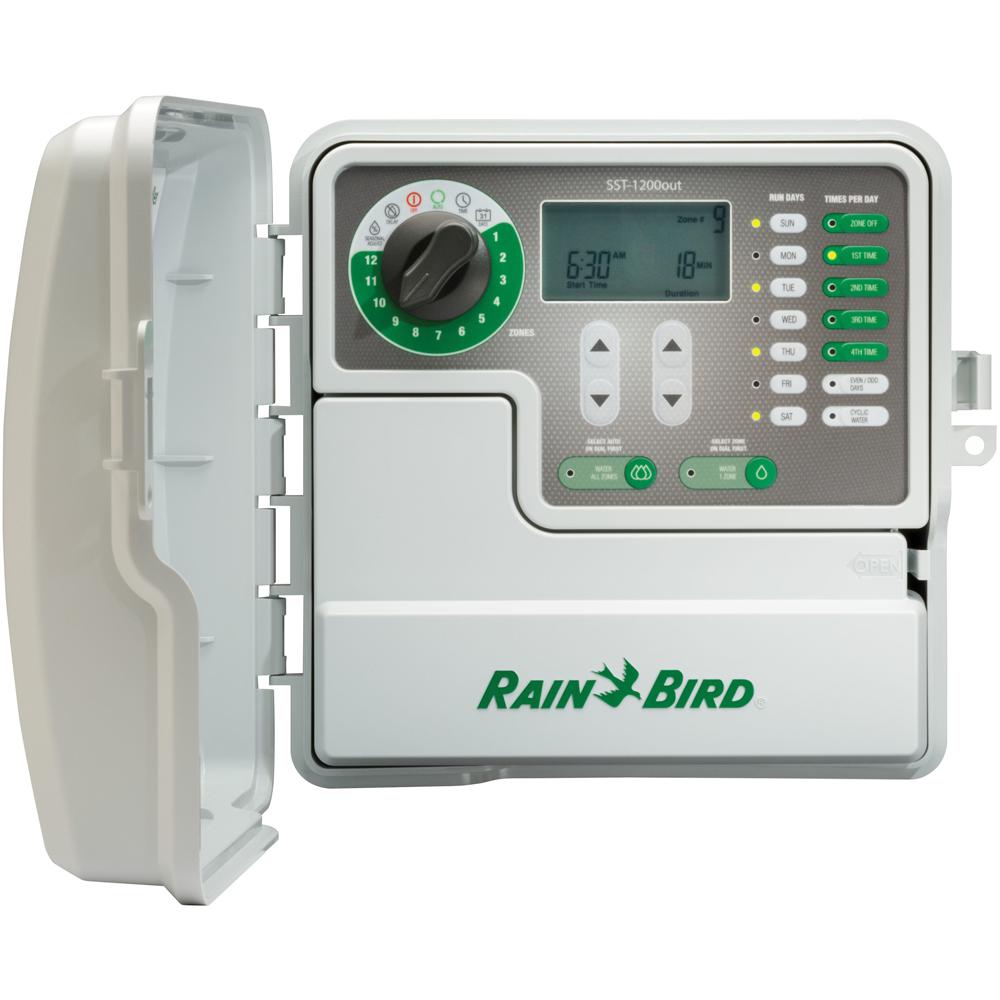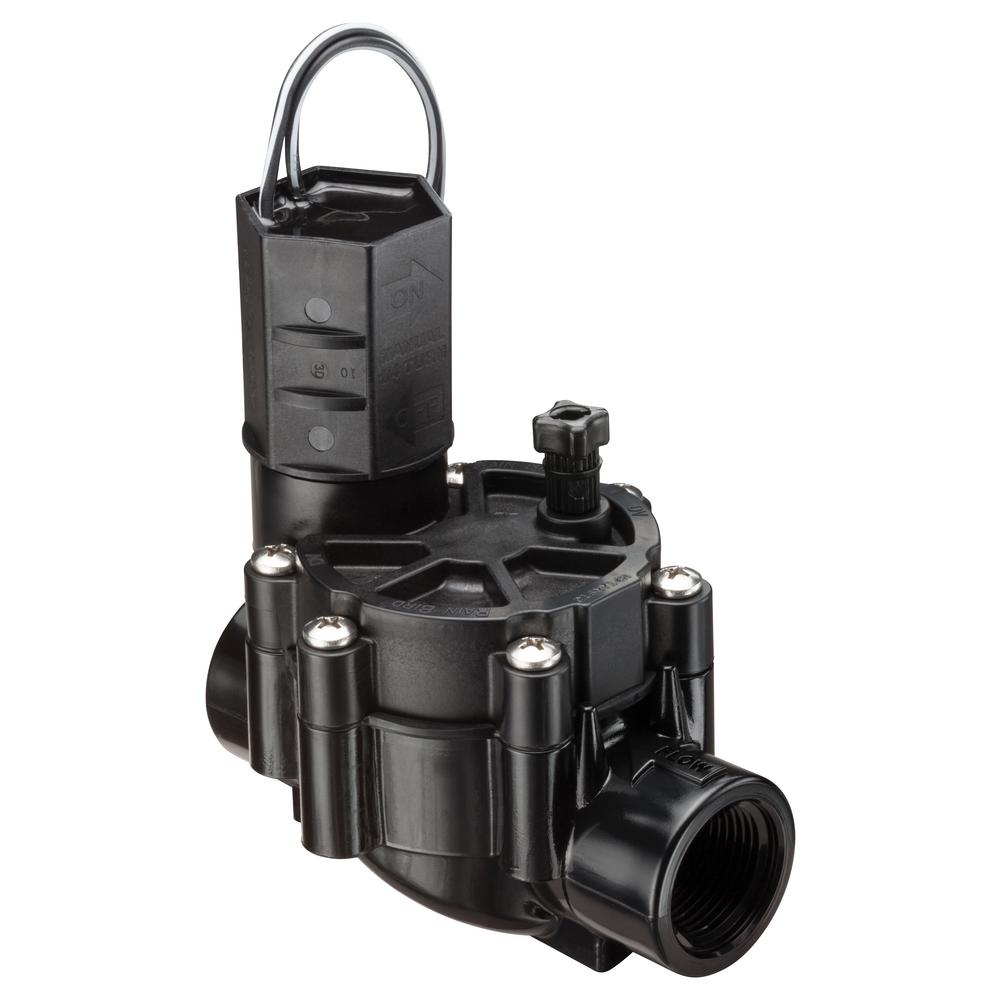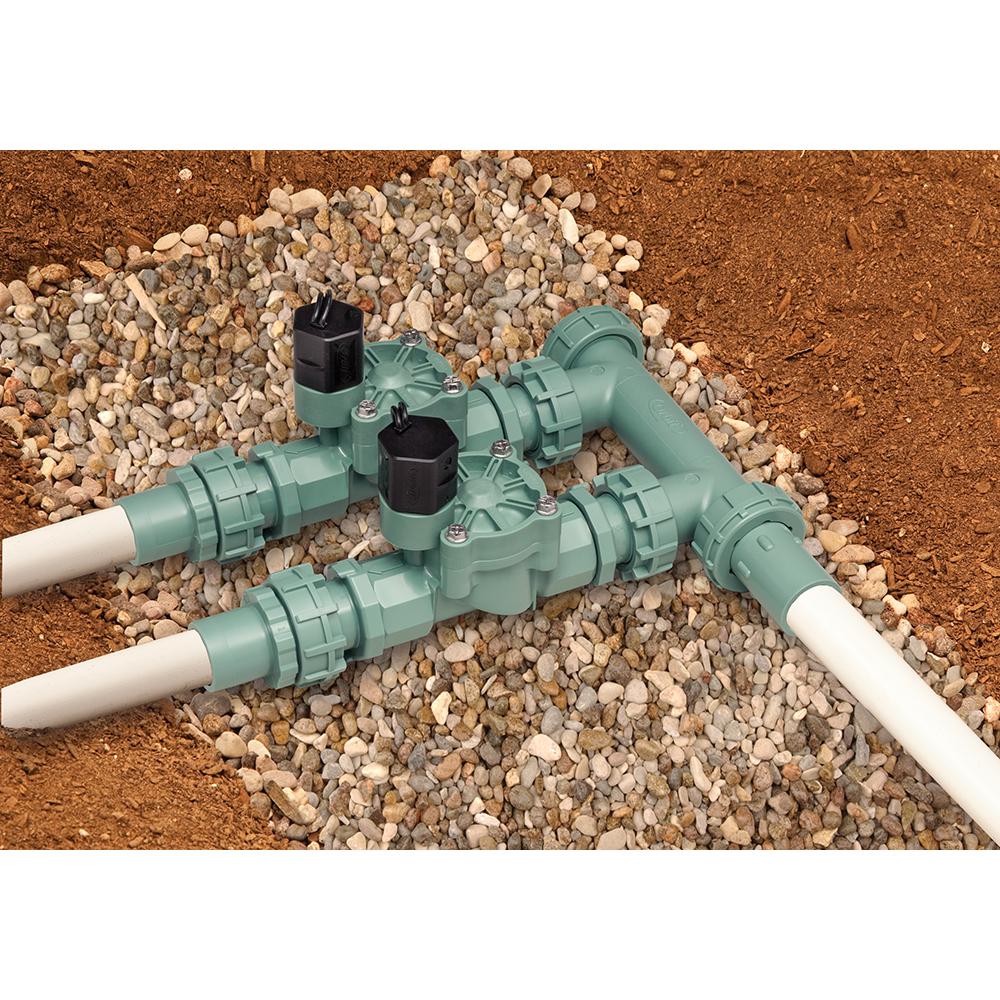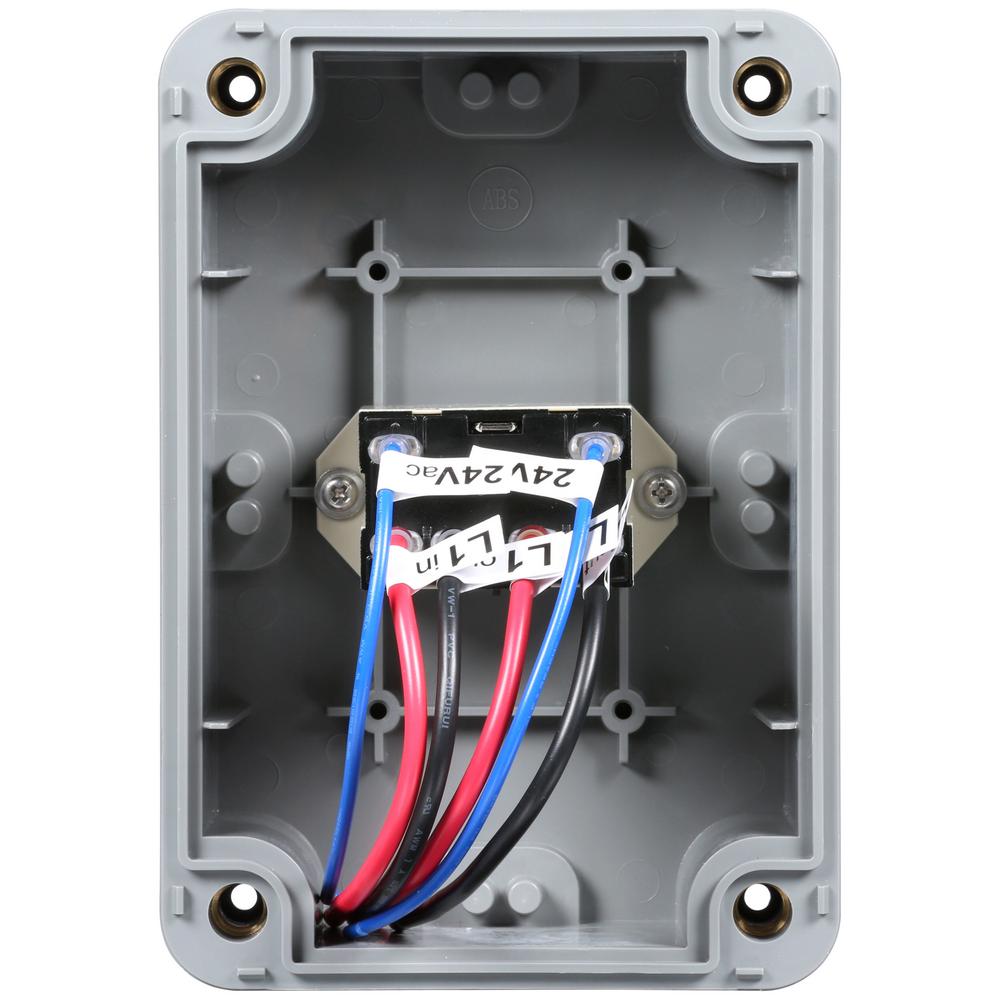My current set up is: an intermatic mechanical timer that controls a well-water pump, and it feeds and a K-Rain 4000 (or similar) indexing valve. The timer and the valve are within 4 feet of each other. I also have a rain sensor. The indexing valve rarely changes zones despite me replacing the interior disk twice; I'm tired of having to take it apart.
I would like to replace that valve with 2 inline or other type of valve that I can activate separately. My current setup has a zone with rotors, and the second with the sprinkler heads that water my wife's orchids; I want to be able to simply activate one of my 2 zones independently, for example.
After some research, I've learned that I need a new controller, and some type of valves, 2 of them for my 2 zones.
Do my drawings make sense? Should I bury the valves in a box? I don't have freezing concerns here in Miami.
THanks
I would like to replace that valve with 2 inline or other type of valve that I can activate separately. My current setup has a zone with rotors, and the second with the sprinkler heads that water my wife's orchids; I want to be able to simply activate one of my 2 zones independently, for example.
After some research, I've learned that I need a new controller, and some type of valves, 2 of them for my 2 zones.
Do my drawings make sense? Should I bury the valves in a box? I don't have freezing concerns here in Miami.
THanks
Attachments
Last edited:

